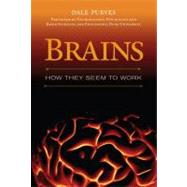
Dale Purves is Professor of Neurobiology, Psychology and Neuroscience, and Philosophy at Duke University. He is a graduate of Yale University and Harvard Medical School. Upon completion of an internship and assistant residency at Massachusetts General Hospital, Dr. Purves was a post-doctoral fellow in the Department of Neurobiology at Harvard Medical School and subsequently in the Department of Biophysics at University College London. He joined the faculty at Washington University School of Medicine in 1973 where he was Professor of Physiology and Biophysics, and came to Duke in 1990 as the founding chair of the Department of Neurobiology in the School of Medicine. From 2003 to 2009 he was Director of Duke’s Center for Cognitive Neuroscience, and is now Director of the Neuroscience and Behavioral Disorders Program of the Duke-NUS Graduate Medical School in Singapore. He is a member of the National Academy of Sciences, the American Academy of Arts and Sciences, and the Institute of Medicine.
| Preface | p. xi |
| Neuroscience circa 1960 | p. 1 |
| Neurobiology at Harvard | p. 17 |
| Biophysics at University College | p. 37 |
| Nerve cells versus brain systems | p. 51 |
| Neural development | p. 69 |
| Exploring brain systems | p. 87 |
| The visual system: Hubel and Wiesel redux | p. 105 |
| Visual perception | p. 123 |
| Perceiving color | p. 143 |
| The organization of perceptual qualities | p. 161 |
| Perceiving geometry | p. 179 |
| Perceiving motion | p. 201 |
| How brains seem to work | p. 219 |
| Suggested reading | p. 235 |
| Glossary | p. 241 |
| Illustration credits | p. 275 |
| Acknowledgments | p. 281 |
| About the author | p. 283 |
| Index | p. 285 |
| Table of Contents provided by Ingram. All Rights Reserved. |
The New copy of this book will include any supplemental materials advertised. Please check the title of the book to determine if it should include any access cards, study guides, lab manuals, CDs, etc.
The Used, Rental and eBook copies of this book are not guaranteed to include any supplemental materials. Typically, only the book itself is included. This is true even if the title states it includes any access cards, study guides, lab manuals, CDs, etc.